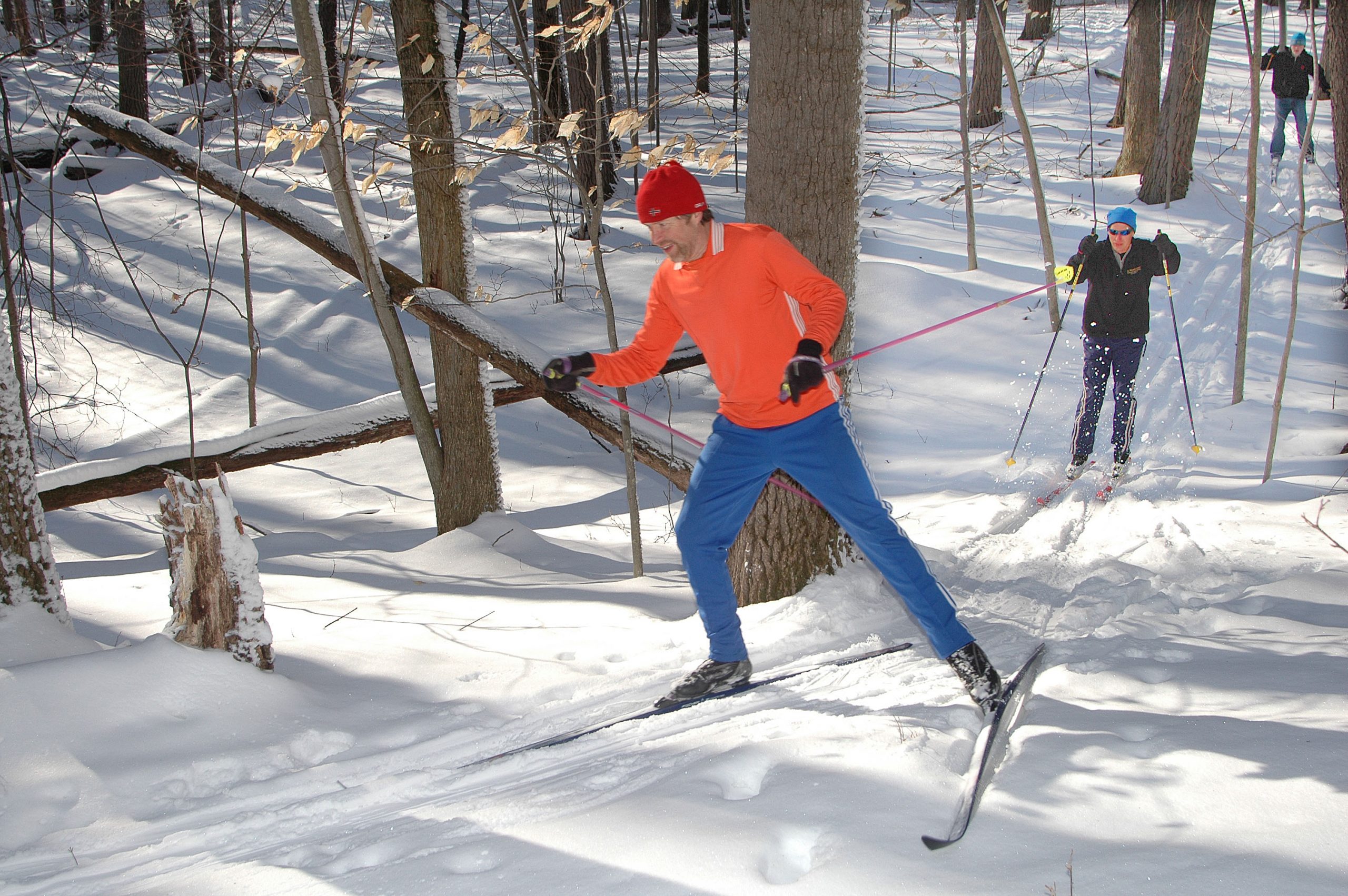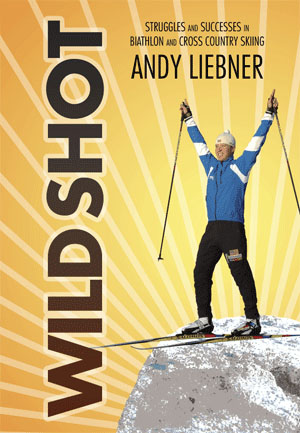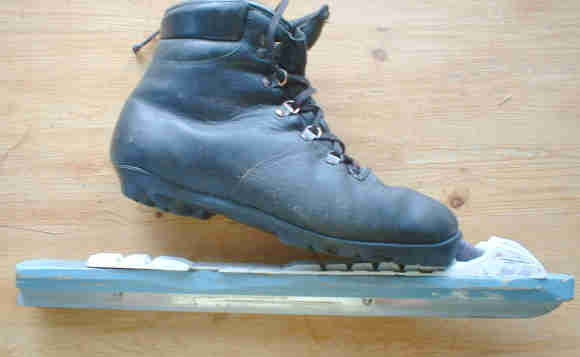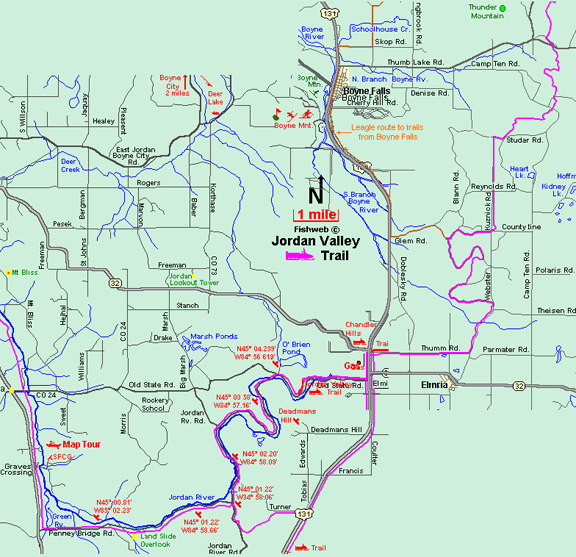I’ve been thinking that to give XC skiing a shot in the arm, a jumpstart, that it needs to be busted open, wide open. But how? And what do I mean, anyway?
Right now, nearly all XC skiing is considered to be done on wide, groomed trails. And ski-skating has the reputation for being the fast’n’fun side of XC.
That’s cool except for the fact that there aren’t very many groomed trails in the world — at least compared to regular trails. So people often have to drive quite a ways to ski. Actually, they don’t have to because they don’t ski. Because they have to drive to get to their perceived fun they just skip it. XC skiing is in a slump.
Also, the speed of skiing depends on the trail not on the type of skiing being used. On a hilly, narrow trail, ski-skating isn’t the fastest way to go at all. And even on a wide groomed course, ski-skating is only 10-20% faster than classic-striding. Again, as the course becomes more challenging that difference diminishes. It also diminishes as the skier becomes more skilled. World Cup ski racers are only 10% faster when skating in all situations. Well, their courses are always set up to be challenging. Didja know that a fairly steep uphill will reduce many average skaters to a waddle while a decent classic skier can still be gliding straight up the hill, faster?
Anyway, it seems to me that if XC skiing were shown (and sold) as having 5,000 miles of free trails, many nearby, compared to only 100 miles of trails that cost $5-10 to use each time and which are a long drive away, that it could become much more popular. Its potential would seem to be far greater if it is shown to have more places it can be done.
Indeed, there are 100X more hiking and biking trails out there than there are groomed ski trails. At least, in many places that’s the case.
Sure, there are hotspots of XC skiing popularity within 5 miles of groomed areas, but do we want to limit the sport to such lightly populated locations?
Then there’s equipment. If skiing is sold on ultralight, thin, “superfast” equipment — meaning, if such equipment is displayed and pitched as being “the best” and “at the top.” Then that’s the rep the sport will have. Really light, expensive, narrow skis and ultralight, exotic fragile poles will define the sport. …It’s too bad, once again, that such equipment is only suitable for the few groomed courses far away. If this so-called “best” equipment was used on an everyday trail, it would be broken in an hour. How great is that?
Wider, stouter, all-rounder ski equipment is perfectly high-tech. It’s just strong and versatile. It’s designed for skiing on ungroomed trails. It can handle bumps, heaves, stones, roots, sticks in the trail. It won’t break if you tumble. Sure, the tough duty wears out the skis in a few years but at least you can have fun anywhere there’s snow in the meantime. Actually, I find that an all-rounder kit tends to hold up about 10 years. ‘Course it all depends on how hard you are on it. But, thankfully, it’s not very expensive to begin with.
Yeah, wouldn’t XC skiing have more potential if it was presented that it can be done “anywhere there’s snow”?
New-era skis, bindings, boots and poles are designed to work together as an integrated system to give good control on twisty, windy, narrow hiking and biking trails.
What’s more, you don’t need fancy waxes or base-grinds for such skiing. It’s more about your skiing skill per se. As long as you have grip going up, on a curvaceous hiking trail you’re not concerned about having a frictionless ski-base when going down. In fact, a bit of friction can be a nice thing on picturesque trails.
Groomed courses have all the lumps and twisties bulldozed out of them for a smooth, magic carpet ride where ski bases are always being milked for all their speed since there isn’t often all that much ski handling going on. Groomed courses bring a whole expensive and time-consuming ski-prep industry with them in their wake to get the most glide fun out of skiing. Again, what has more potential? Out-of-the-box no-fuss ski fun and challenge? Or fussy technology?
Trail skiing is a lot more challenging. It should be presented like skateboarding. You don’t just stand there and let the grooves carry you away. You work on learning how to clean various sections. If you mess up you often turn around and try again, maybe starting not so high up on the hill. With groomed areas you eat up the miles, gliding along. With trail skiing a lot can be packed into a small area. Of course, once your skills are developed your flow can deliver the miles.
I’ve been fooling around with names already here, so let’s deal with that. At a groomed area, are you really skiing a TRAIL? It seems more like a COURSE, to me. Such courses can often be very wide, in fact — like 30 feet — 2 lanes of skating, 2 lanes of classic — sometimes with separate sets for each direction. It seems like a trail is only 3-4 feet wide. Hikers, bikers — and classic striding skiers — use trails. If they want to pass someone, they squeeze by — they learn how to finesse it. Once the trail gets wider it’s called a “two-track.” That’s not a trail, it’s a small road. Such width lets you easily ski side by side and lets you pass without using any extra skill.
At a groomed area so much of the terrain can be treated and handled that it’s like a downhill ski area only set on a few more acres. That’s why an XC ski “area” and downhill ski “area” can both be called by similar terms. They’re resorts. Which is fine.
But what has more potential? …”Anywhere there’s snow” or a special place that’s worked-over and set aside?
What about sustainability and impact? Groomed XC areas cost a LOT of $ to maintain. They take a lot of time and manpower and staffing. They involve a lot of FUEL EXHAUST and the use of machines. Snowmobiles and caterpillars crawl all over such places before they’re ready for skiing. Such machines cost a LOT of time and money! …To buy, run and maintain. They have standards and legal parameters for their operation. Just any old snowfall won’t do. Just any old trails won’t do. Trails have to be opened up and smoothed first. There’s a LOT of work required before winter. It’s a matter of landscaping and excavation. Then once it snows a base has to be built up and handled “just so” before skiing is allowed.
Consider trail skiing… All you need is any old trail. And a couple inches of snow. And there ya go.
Where’s the potential?
Sure, trails need maintenance, too. But if you’re keeping them good enough for anybody, they’re good enough for skiing. OK, you’ll want to remove logs. And even kick aside sticks.
Actually, it’s true that anywhere there’s snow is good for skiing. Skiing is thus actually much more diverse than hiking or biking. It actually doesn’t even need a trail per se. Any snow surface that you can make ski trails upon is a trail for skiers. Whoa! Talk about potential!
So if there’s a public woodlot that has a certain hiking/biking trail layout through it, come winter if a more-fun line can be noticed anywhere, why, then skiers can make a trail there instead!
And, of course, once waterways freeze the ski trails can go there, too.
What’s more, what is called public space tends to widen greatly in the winter. Golf courses are exclusive preserves for the wealthy (or the indebted) in the summer. Come winter, you can walk or ski over them as you please.
Right now quite a few ski buffs who live near here are most into ski-skating, which is fine. And they’ll tell you that the skiing isn’t very good locally, meaning not very good for groomed ski-skating — which is fine and true, too. I like ski-skating as much as anyone and, yes, it’s not good around here. But the other truth is that we have a dozen good trails and places for trail skiing and we have 50 days of the season which are suitable for trail skiing within an hour of town. So if you live around here and actually want to ski, it might be worthwhile to give trail skiing a try. After all, isn’t all skiing the same? It’s just gliding on snow. An Olympic coach of many gold medalists once told me that the joy of skiing is simply in the glide. If you can get glide you can enjoy skiing. I’m guessing that it doesn’t matter much how you get the glide. I suppose it also needs to have that “getting more out of it than you’re putting in” feeling. But that’s what glide is about: you’re standing yet you’re moving. That’s the payoff. And the biggest payoff is probably to go where the snow is closest then glide on it.
I get the feeling that skiing is in the same boat that biking was in in the early 1980’s. Road bikes were becoming refined and suitable only for smooth roads and sporty use. They were harsh, fast and fragile. Motorists hadn’t yet accepted humans on roads. Cellphones didn’t exist for reporting homicidal drivers. Dogs hadn’t yet been corralled behind electric fences. Biking was in decline. …Then along came the mt-bike. You could ride them anywhere there was a trail. Forget the cars. You could ride them anywhere around town, too — forget the bumps and bad pavement. You could ride in a comfy upright position — forget elite sport. You could have fun on them and do tricks and they wouldn’t break — forget fragility masked as specialness. Mtbiking exploded the bike world ten-fold. (And now we have a situation where many mtbikers who live in snow country whine and stay indoors once the snow flies. Hello? Your trails are calling you! The joy of biking is also glide. Skiing will give you what you crave. So ski what you ride!)
Part of its success was in its name. “Mountain” biking — ahh, bliss! Who doesn’t love a mountain? …Even though only a quarter of it was done in the mountains.
So doesn’t XC skiing deserve a name that will set it free? That will counteract its current slump?
I don’t know what the good name should be. Trail skiing? Adventure skiing? Mountain skiing?





